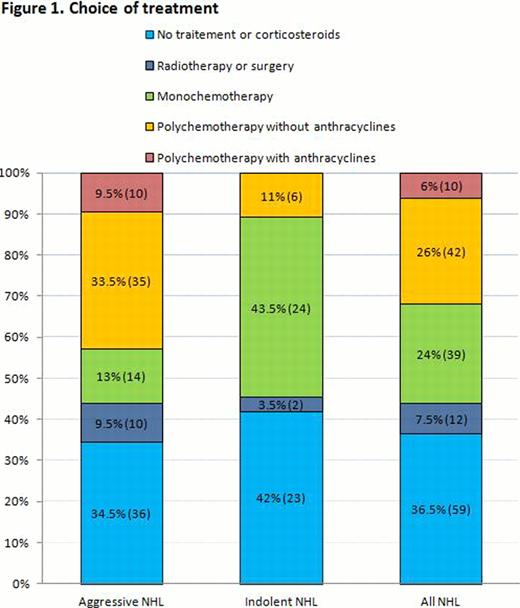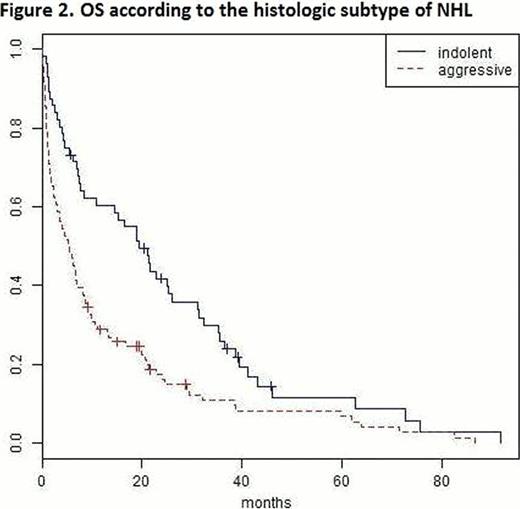Abstract
Lymphoma occurring in very elderly patients (i.e. >90 years of age) is not uncommon and its incidence is expected to increase due to prolongation of life expectancy. Its management raises therapeutic as well as ethical considerations. However, no reports are currently available in this population of patients rendering their management particularly challenging. The purpose of our study is to describe the clinical presentation, management and outcome of patients diagnosed with lymphoma at the age of 90 or over.
In a retrospective, multicenter study, we analyzed 234 patients with Non-Hodgkin (NHL, n=227) and Hodgkin (HL, n=7) lymphoma diagnosed at the age of 90 or over, between 1990 and 2012.
Histologic incidence of lymphoma subtypes was evaluated using 3 epidemiologic cancer registries, accounting for 128 patients. In this cohort, 55% of the patients presented with aggressive NHL, 42% with indolent NHL and 3% with HL. The most frequent histologies were diffuse large B cell lymphoma (46%), follicular lymphoma (9.5%), lymphoplasmacytic lymphoma (8%) and marginal zone lymphoma (5.5%).
Clinical characteristics, management and outcome were collected for 169 patients among several institutions. At diagnosis, median age was 92 [range 90–100]. Most patients were female (66%) and still living at home (73%). Charlson index was low (i.e. ≤2) in 68% of the patients. Forty-five percent of the patients had a low (i.e. ≤1) performance status (PS).
The majority of the patients (63.5%) received a treatment (Fig. 1).
Median overall survival (OS) for the entire cohort was 6.9 months. OS was significantly shorter in patients with aggressive lymphoma (OS = 5.2 vs 19.2 months, p<0.001, Fig. 2), poor (i.e. ≥2) PS (OS = 4.1 vs 16.6 months, p=0.001), advanced (i.e. III-IV) Ann Arbor stage (OS = 2.3 vs 7.1 months, p=0.04), low (i.e. ≤36g/L) albumin level (OS = 4.6 vs 13.8 months, p=0.002) and in the absence of treatment (OS = 4.5 vs 9 months, p=0.05).
Causes of death were: lymphoma in 58% of cases, anti-lymphoma treatment in 8.5% of cases and other causes in 33.5% of cases.
Lymphoma occurring over the age of 90 is more frequently aggressive than indolent. Most of the patients die of lymphoma rather than from toxicities of the treatment. This suggests that a subset of patients may benefit from adapted therapies in spite of their very advanced age. Management of these patients may be guided by prognostic factors such as histologic subtype, PS, Ann Arbor stage and albumin level.
No relevant conflicts of interest to declare.

This icon denotes a clinically relevant abstract
Author notes
Asterisk with author names denotes non-ASH members.




